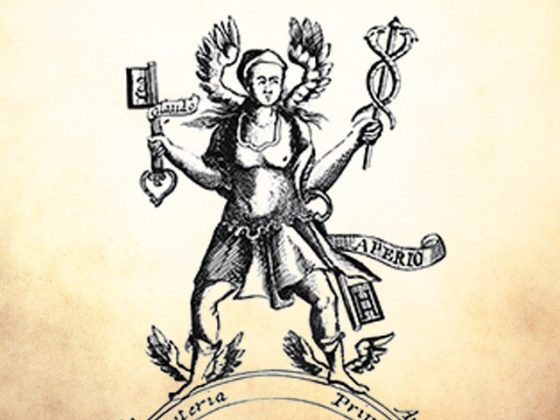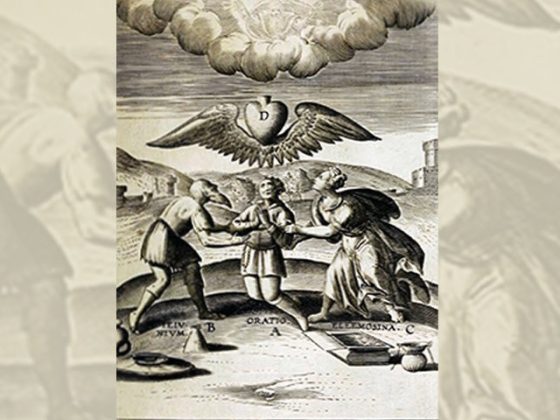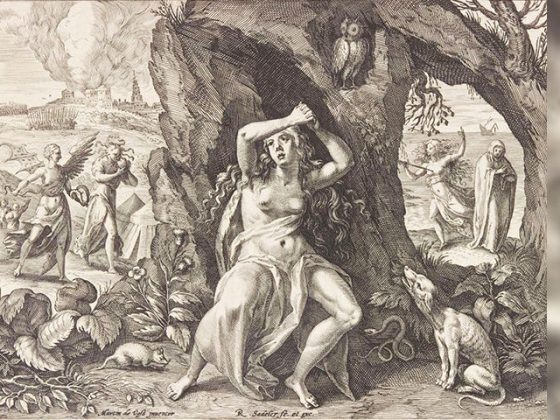Dearly beloved reader friends:
It is with great pleasure that I am delighted to send you the following sculpture that bears the name…
…THE CHIMERA OF AREZZO
This sculpture, of Etruscan origin, is made of bronze and is estimated to have been made around 400 BC near the city of Arezzo ─Italy─, where it was found in 1553. It measures 129 cm in length and is 78 cm high. It is currently in the National Archaeological Museum of Florence.
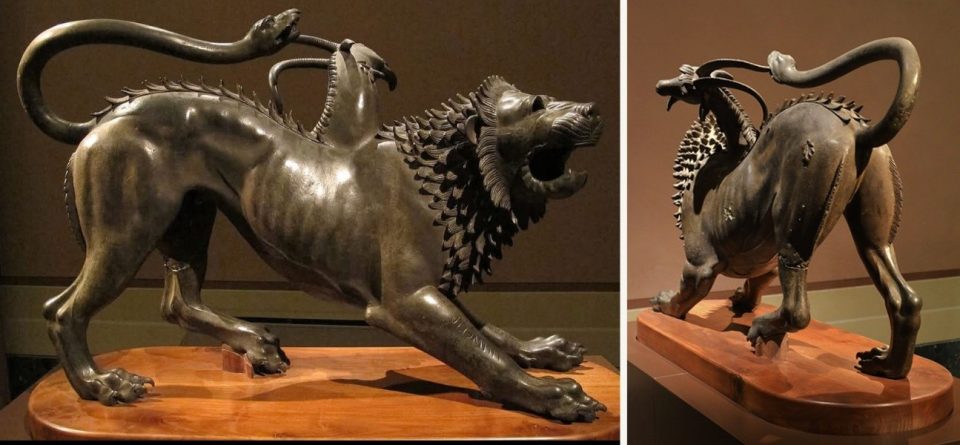
Historians argue that it was a votive offering to the Etruscan god Tinia because it had an Etruscan inscription engraved on one leg that reads tin gcvil, which means ‘offering belonging to Tinia'. It is possible that the statue was originally part of a larger sculptural group, possibly along with the mythical character Bellerophon.
Here she is depicted as a slender creature wounded in combat, with outstretched claws, a roaring mouth, and an arched back from which a goat's head protrudes. Both the body and neck of the goat are injured with drops of blood gushing out. Her tail ends in a serpent’s head and bites one of the goat's horns.
According to Greek mythology, the Chimera was a monster that roamed the regions of Asia Minor, terrorizing populations and gobbling up animals and even entire herds. She was a single creature that had three heads: one of a lion, another of a goat that came out of its back and exhaled fire, and the last one of a dragon or serpent that was born in the tail. She was very difficult to subdue because she had the strength of three animals, but the hero Bellerophon eventually defeated her at the command of King Iobates of Lycia with the support of his Pegasus, the winged horse. The Chimera is considered to be the daughter of Typhon and Echidna. There are several descriptions of her death: some simply say that Bellerophon pierced her with his spear while others maintain that he killed her by covering the tip of the spear with lead that melted when exposed to Chimera's fiery breath.
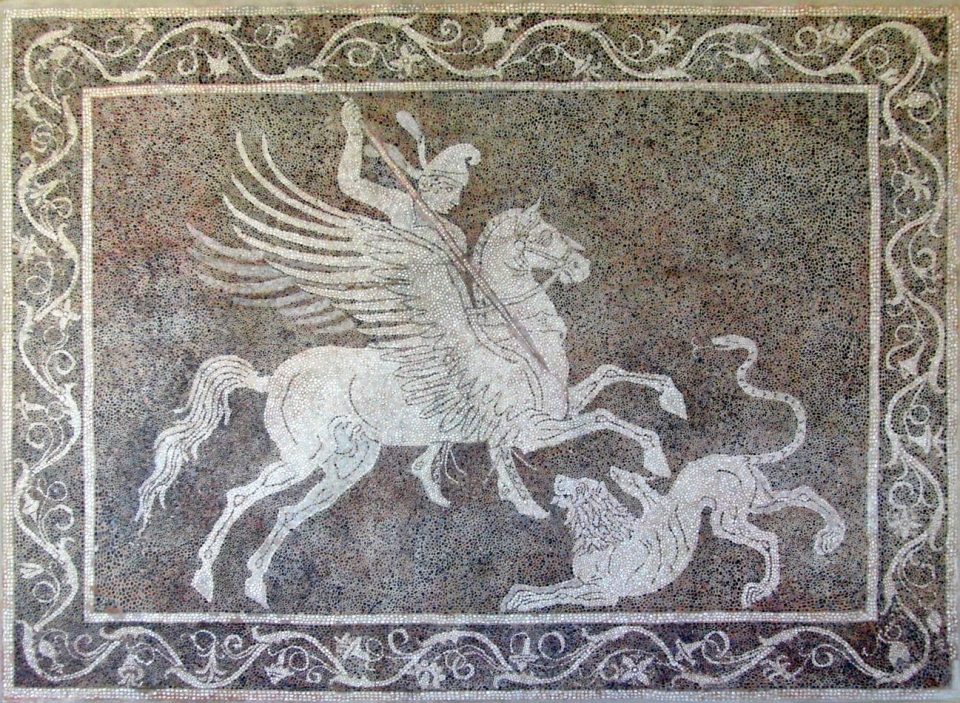
We comment that Bellerophontes, also called Bellerophon ─'slayer of Belleros'─, was a hero of Greek mythology born in Corinth, whose greatest feats were fighting the Amazons ─other warrior peoples─, taming the winged horse Pegasus and killing the Chimera. His original name was Hipponous, ‘connoisseur of horses', or Leophon, but he changed it to Bellerophon after he had accidentally killed a Corinthian tyrant named Belleros —Homer, Iliad─.
Having said all of the above, let us now go to the interpretation of this mythological creature that, certainly, had monstrous characteristics.
In horizontal life, the chimera is alluded to when, in an attempt to refute an argument of someone who is considered to be exaggerating his arguments, he is refuted with this phrase: “What you are saying is a chimera,” meaning that what is being exposed is as incoherent or absurd as the Chimera was for millennia…..
However, when it comes to analyzing the characteristics of this aberrant animal or mythological creature, we find in it quite interesting things from the Gnostic point of view. First of all, and obviously, it is the representation of absolutely instinctive states that must be disintegrated within the human creature, like all those representations of Greek mythology that point to monsters against which Hercules had to fight to regain his place in the Olympus of the Gods.
Observing the body of this frightful beast, we see that it is made up of three animals: a lion's head and body, a goat that protrudes from its back and a serpent’s tail ─sometimes a dragon's─.
The lion's head can easily be associated with the psychological aggregate of ANGER. Let us remember here that the first task that was imposed on the mythological Hercules was precisely the capture and death of the Lion of Nemea. The goat with its horns and its mouth through which it breathes fire represents lustful instincts combined with the fierceness of the lion; here is another reference to our un-whitened Tipon Baphomet, in other words: INFERNAL LUST. And, finally, the serpent's tail points us to the very FORNICATION itself….. Such a serpent has nothing to do with the Sacred Serpent neither can it be associated with that serpent with which Moses healed the Israelites in the desert, but it does have concordance with the serpent that Apollo killed WITH HIS ARROWS or with that other that crawled in the mud of the earth seeking to tempt Adam and Eve, inciting them to fornication.
These three animalistic states undoubtedly incite us to very violent passions, difficult to identify in our psychic anatomy and, therefore, they are difficult to uproot from the animic continent.
It is curious that this monstrous animal appears semi-wounded by combats it has had with other wild creatures. However, his days end when a hero named BELLEROPHON, mounted on the mythical PEGASUS or PEGASO, kills it using a ─phallic─ spear, to which he had added lead at the tip so that, when it came into contact with the breath of the CHIMERA, it would burn it and kill it with his ardours.
The great Greek writer and poet Hesiod affirmed that the Chimera was in fact the daughter of the THE HYDRA OF LERNA, another monster that in our Gnostic studies symbolizes THE ANIMAL MIND, ANIMAL DESIRE AND EVIL WILL.
Although it may seem unusual or incoherent to us, dear reader, this type of infernal creations certainly exists in the infra-dimensions of Nature or avernus or tartarus. As we descend through the arcades of the abyss we find this type of creature, which are the residues of our own aggregates and at other times are residues of aggregates of other lost souls that are in the process of disintegration.
It is good to point out that the destroyer of the Chimera uses in his fight with the aforementioned monster precisely a spear, which, alchemically, symbolizes the erotic force that we have to use in our work in the Forge of Vulcan. Only with the power of the sacred spear is it possible to disintegrate our own demonic creations that prevent us from correctly relating to the various parts of our profound inner BEING. The fire of Eros, sublimated, is the same INRI ─‘Igni natura renovatur integra─ capable of killing our psychic incoherences and on the other hand creating true inner life. That is the double-edged sword of the ancient mysteries, which, wisely wielded by the warrior who yearn for the Golden Fleece, finally bestows it after bloody battles…….
Having said all of the above, I now proceed to give you some very interesting sentences to be reflected upon:
“Virtue may be nothing but the urbanity of the soul.”
Balzac
“If it did not cost to be virtuous, would we have any merit in being virtuous?”
Saint John Chrysostom
“In the bosom of a virtuous man there is a God.”
Seneca
“In order to be virtuous, one needs nature, reason and habit.”
Aristotle
“It is not enough to have virtue and not make use of it, it is like having an art and not exercising it.”
Cicero
GLADIUS DEI.
─‘The sword of God’─.
KWEN KHAN KHU



